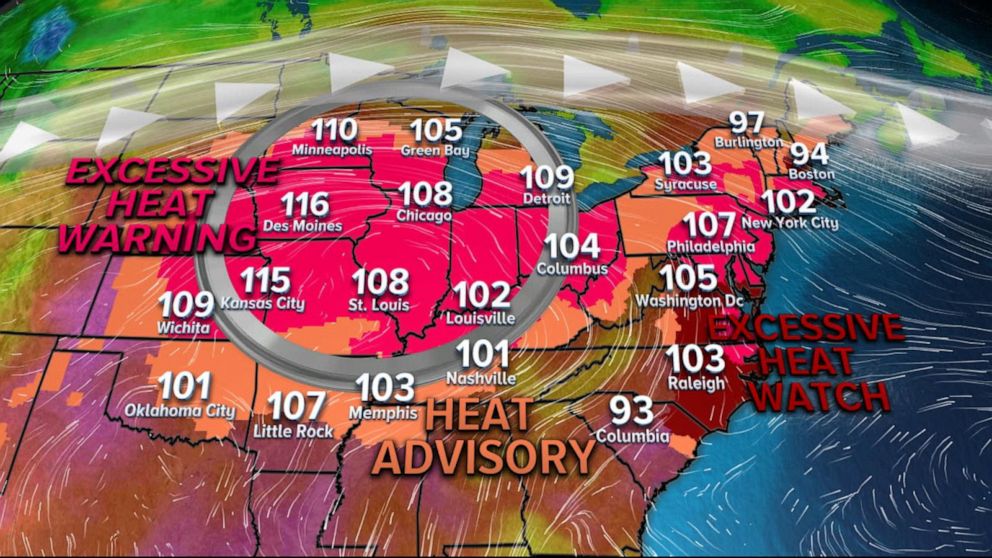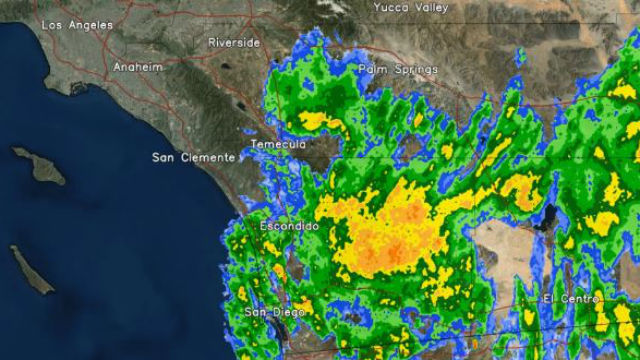Why Excessive Heat Warnings Are Often Missing From Forecasts

Table of Contents
Limitations of Current Forecasting Technology
The accuracy of Excessive Heat Warnings is hampered by limitations in current weather forecasting technology. Predicting localized extreme heat events with precision is challenging due to several factors.
Resolution and Accuracy Issues
Current weather models struggle to accurately capture the nuances of localized extreme heat. This is particularly true in urban areas.
- Insufficient data resolution: Many models lack the fine-grained detail needed to predict extreme temperature fluctuations within small geographical areas. A single reading for a large area may mask dangerous localized spikes in heat.
- Difficulty modeling the urban heat island effect: Cities tend to be significantly hotter than surrounding rural areas due to factors like concrete structures and reduced vegetation. Accurately modeling this effect requires sophisticated techniques that are not consistently applied across all forecasting models.
- Limitations in predicting extreme temperature fluctuations within a short time frame: Sudden and drastic changes in temperature are difficult to forecast accurately, especially with current models. These rapid changes can be critical for issuing timely warnings.
Data Scarcity in Certain Regions
Accurate forecasting relies on comprehensive data, but this is lacking in many regions. This is especially true in developing countries.
- Lack of comprehensive meteorological networks in some regions: Insufficient numbers of weather stations mean that crucial data points are missing, leading to less accurate regional forecasts.
- Unreliable data collection methods: In some areas, data collection methods are inconsistent or unreliable, further compromising the accuracy of forecasts. Outdated equipment or inconsistent maintenance can significantly impact data quality.
- Sparse historical records for extreme heat events: Long-term data on extreme heat events is essential for developing accurate prediction models. The lack of this historical information hinders the ability to forecast future events.
Thresholds and Criteria for Issuing Excessive Heat Warnings
Inconsistencies in the criteria used to issue Excessive Heat Warnings further contribute to their absence or inadequacy in many forecasts.
Varying Definitions Across Regions
Different meteorological agencies use different thresholds and criteria for issuing heat warnings, resulting in inconsistencies.
- Different temperature thresholds for different regions: What constitutes an “excessive heat” event can vary significantly from one region to another, leading to confusion and potentially delayed warnings.
- Varying considerations of humidity and other heat index factors: The heat index, which combines temperature and humidity, is a more accurate measure of how hot it actually feels. However, not all agencies equally incorporate this factor into their warning systems.
- Inconsistent communication protocols: Even when a heatwave is identified, inconsistent communication protocols can lead to delays in issuing warnings to the public.
Focus on Other Weather Events
The prioritization of other weather events often overshadows the threat of excessive heat.
- Resource allocation for forecasting different weather phenomena: Resources and attention are often concentrated on more visually dramatic events like hurricanes and tornadoes, potentially leaving the forecasting of heatwaves under-resourced.
- Media attention and public awareness differences: The public perception of risk varies between different weather phenomena. Heatwaves, while potentially deadly, may receive less media coverage than other events.
- Differing levels of perceived risk: The public often underestimates the danger of extreme heat, leading to lower levels of preparedness and a lack of urgency in issuing warnings.
Communication Gaps and Public Awareness
Even when Excessive Heat Warnings are issued, they may not reach those most vulnerable.
Lack of Effective Dissemination
Challenges exist in reaching vulnerable populations with crucial information.
- Reaching individuals without consistent access to technology or reliable information sources: Many vulnerable populations lack access to internet or television, meaning they may miss warnings delivered through those channels.
- Language barriers: Warnings need to be available in multiple languages to ensure they reach diverse communities.
- Cultural differences in understanding heat-related risks: Cultural factors may influence the way people perceive and respond to heat warnings.
Public Underestimation of Heat-Related Risks
The public often underestimates the risks associated with extreme heat.
- Heatstroke and other heat illnesses often underestimated: Many people are unaware of the severity of heatstroke and other heat-related illnesses.
- Lack of awareness of long-term health impacts of extreme heat: The long-term health effects of heat exposure, such as cardiovascular issues, are often overlooked.
- Complacency: Repeated exposure to heat can lead to complacency, resulting in a decreased awareness of risk.
Conclusion
The absence of adequate Excessive Heat Warnings stems from a combination of factors: limitations in forecasting technology, inconsistent warning criteria across regions, and communication gaps that prevent warnings from reaching vulnerable populations. Improving forecasting technology, standardizing warning criteria, and launching widespread public awareness campaigns are crucial steps towards mitigating the devastating effects of extreme heat. Demand better, more consistent Excessive Heat Warnings from your local meteorological agencies. Your safety depends on it.

Featured Posts
-
 Amber Heards Twins The Elon Musk Fatherhood Debate
May 30, 2025
Amber Heards Twins The Elon Musk Fatherhood Debate
May 30, 2025 -
 New Us Duties On Solar Panels From Southeast Asia Impact And Implications
May 30, 2025
New Us Duties On Solar Panels From Southeast Asia Impact And Implications
May 30, 2025 -
 San Diego Forecast Light Showers Fog And Cooler Temperatures Predicted
May 30, 2025
San Diego Forecast Light Showers Fog And Cooler Temperatures Predicted
May 30, 2025 -
 Elon Musks Daughter Vivians Modeling Debut Fuels Speculation About Family Relationship
May 30, 2025
Elon Musks Daughter Vivians Modeling Debut Fuels Speculation About Family Relationship
May 30, 2025 -
 An Insiders Guide To Paris Best Neighborhoods
May 30, 2025
An Insiders Guide To Paris Best Neighborhoods
May 30, 2025
